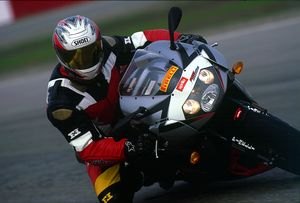El Diablo Rides Again
Some of you may be aware that Pirelli introduced a fantastic supersport race/street tire last year, called the Dragon. The Dragon EVO was intended for street use and the Dragon Supercorsa is a DOT race tire. The Dragons possess outstanding grip and decent wear characteristics. Problem is, the EVO looked like its sibling, the Supercorsa race tire. When Johnny Q. Public went into the dealership and saw a Dragon EVO, he said "That looks bitchin!" But when it came time to plunk down his hard earned $$$ on a new set of street bike tires, Johnny was a little spooked by the scarcity of tread on the Dragon's broad shoulders, leading to the inevitable question; "What happens when it rains?" The wet performance of the Dragon EVO wasn't bad, but its look said "don't ride me in the wet". After seeing sales move to more conservatively styled competitor's tires, Pirelli went back to the drawing board and came up with what may well be the ultimate real world sportbike/trackday tire, the Pirelli Diablo.
The Diablo is aimed at sportbike pilots who spend much of their time on the street, but also participate in the occasional trackday. These riders need outstanding grip in varied conditions, but also need a tire that won't overheat and "Go Off" after a couple hard laps on a racetrack. You might think they would just go back and cut some deeper and longer (where have I heard that before?) grooves in a Dragon EVO and be done with it. Instead, Pirelli took the long, hard (shut up) road and addressed these needs with a few neat technical tricks.
1.) ICS (Ideal Contour Shaping) The brass tacks are: ICS localizes and more tightly regulates the contact patch, for more even pressure and temperature, spreading the peak stress points over a more uniform area, thus allowing temperatures to remain more stable and lessening the effects of heat cycling the tire. This makes the tire able to heat quickly for the street, without overheating on the track. The ICS system is slightly different front to rear, due to the different widths of the tires, allowing the front and rear to work more efficiently together.
More by Sean Alexander





























Comments
Join the conversation